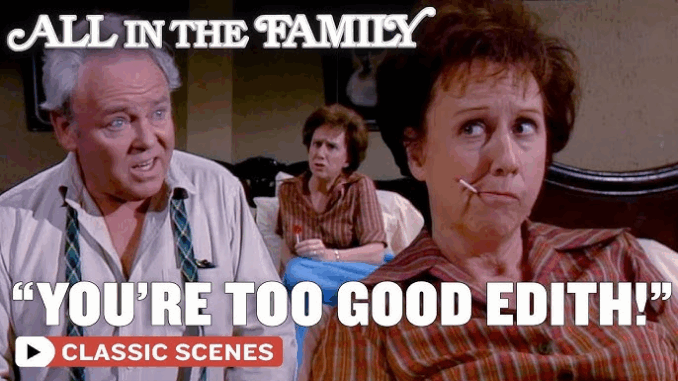
Before All in the Family, television was mostly a safe haven — a place where families watched cheerful characters navigate life’s problems with a smile. Then came January 12, 1971, and with it, a new kind of show that didn’t tiptoe around America’s tensions — it tackled them head-on.
With All in the Family, Norman Lear didn’t just create a hit sitcom. He rewrote the rules of what television could say — and who it could speak for.
A Radical Shift in Prime-Time Programming
In the 1960s, shows like Leave It to Beaver and The Andy Griffith Show dominated the airwaves. They presented an idealized version of American life — one largely untouched by the civil rights movement, the Vietnam War, or the feminist revolution.
But by the early ’70s, America was changing — fast. Lear’s idea was simple but bold: put that real America on television. And thus, Archie Bunker was born.
Archie Bunker: The Flawed Voice of a Nation
Archie wasn’t a hero, nor was he a typical sitcom dad. He was working-class, stubborn, prejudiced — and fully human. He represented the fears and frustrations of many Americans who felt left behind by social progress.
Audiences didn’t always agree with Archie, but they recognized him. Some laughed with him, others at him — but no one ignored him. His arguments at the dinner table mirrored those happening in homes across the country.
Humor as a Weapon — and a Bridge
What made All in the Family revolutionary was how it used humor to disarm. The show delivered sharp political and cultural commentary, but it didn’t feel like a lecture. Viewers came for the laughs — and left thinking about race, gender roles, religion, and more.
This format — serious issues wrapped in jokes — would go on to inspire generations of creators, from Saturday Night Live to The Daily Show, and from The Simpsons to Atlanta.
The Spin-Off Empire and Expanded Impact
Few shows have created such a wide-reaching universe. All in the Family led to a TV dynasty:
-
Maude addressed abortion and feminism.
-
The Jeffersons explored Black upward mobility and racism.
-
Good Times focused on inner-city poverty and resilience.
These spin-offs were more than entertainment — they were vehicles for visibility and representation, giving voice to communities often ignored by mainstream media.
Why It Still Matters
In today’s world — where media is fragmented and political discourse is as divided as ever — All in the Family reminds us that television can still be a forum for national conversation.
It proved that audiences are not only ready for truth — they crave it. As streaming platforms now experiment with issue-driven narratives, they are walking a path first paved by Lear and Bunker.
